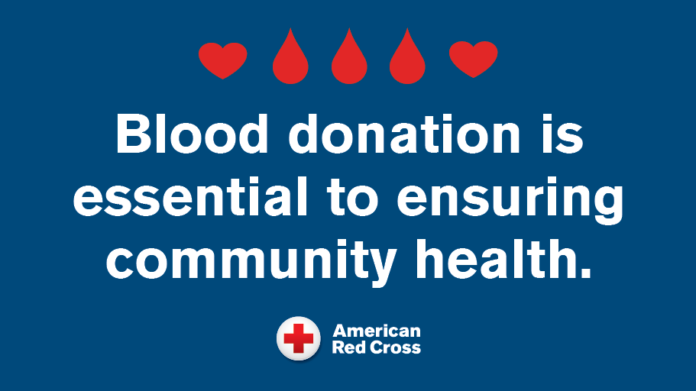Donating blood plasma is a crucial way to support those in need and make a positive impact on your community. Kedplasma, a leading organization in this field, is dedicated to collecting and utilizing plasma to help patients with various medical conditions. In this article, we’ll explore the importance of blood plasma donations and guide you on how to locate Kedplasma donation centers near you. We’ll provide a step-by-step guide to the donation process, outline eligibility criteria, and highlight the benefits of donating plasma. By understanding and supporting Kedplasma’s efforts, you contribute to a meaningful cause and enhance the well-being of individuals in your community.
Explore this topic thoroughly with weninsure.xyz
1. Overview of Kedplasma and its mission.
Kedplasma is a prominent organization dedicated to the collection and processing of blood plasma, which plays a vital role in treating patients with various medical conditions. Established with a mission to ensure a reliable and safe supply of plasma, Kedplasma focuses on supporting therapies for conditions such as immune deficiencies, clotting disorders, and other serious health issues. By partnering with local communities, Kedplasma aims to make a significant impact through its comprehensive donation programs.
Their mission extends beyond just collecting plasma; it involves educating the public about the importance of plasma donation and fostering a culture of giving. Kedplasma operates numerous donation centers nationwide, each equipped to provide a comfortable and efficient donation experience. Through these centers, they work to build a steady pool of donors, ensuring that patients who depend on plasma therapies receive the life-saving treatments they need. Supporting Kedplasma not only helps save lives but also contributes to advancements in medical research and treatment options.

2. Importance of blood plasma donations.
Blood plasma donations are crucial for the treatment of a variety of medical conditions and play a significant role in saving lives. Plasma, the liquid component of blood, contains essential proteins such as antibodies, clotting factors, and albumin, which are vital for maintaining health and treating illnesses. These proteins are used in therapies for patients with immune disorders, hemophilia, and other conditions requiring specialized treatments.
Plasma donations are particularly important because they support the production of life-saving medications and treatments. For instance, plasma-derived therapies are used to treat people with chronic diseases, support burn victims, and aid in emergency medical situations. Unlike whole blood, plasma can be collected separately and used for multiple purposes, making it a valuable resource.
Furthermore, plasma donation is a relatively simple process with minimal risk to the donor. The donation process typically takes about an hour and involves a comfortable procedure similar to giving blood. By donating plasma, individuals not only contribute to essential medical treatments but also support ongoing research and development in the field of medicine.
Overall, plasma donations have a profo

3. How to find Kedplasma donation centers near you.
Finding Kedplasma donation centers near you is straightforward and can be done through several convenient methods. Start by visiting the official Kedplasma website, which features a user-friendly locator tool. Simply enter your city or ZIP code into the search field, and the tool will provide a list of nearby donation centers along with their addresses, hours of operation, and contact information.
Alternatively, you can use online maps and directory services such as Google Maps. Enter “Kedplasma donation centers near me” into the search bar to find locations in your area. This method also allows you to view center reviews and get directions directly to the site.
For personalized assistance, consider calling Kedplasma’s customer service. They can provide information on the closest centers and answer any questions you may have about the donation process.
Additionally, many local community centers and hospitals partner with Kedplasma, so checking with these organizations can also help you find nearby donation sites. Regularly visiting Kedplasma’s website or staying in touch with local healthcare providers will ensure you have the most up-to-date information on donation opportunities.

4. Step-by-step guide to the donation process.
The blood plasma donation process is designed to be efficient and comfortable. Here’s a step-by-step guide to help you through:
Pre-Donation Preparation: Ensure you meet the eligibility criteria, such as being in good health and not having recent health issues. Hydrate well and avoid heavy meals before your appointment.
Arrive at the Donation Center: Check in at the front desk, where you’ll provide identification and complete some paperwork, including a medical history questionnaire.
Health Screening: A staff member will conduct a brief health screening, which includes measuring your blood pressure, pulse, and hemoglobin levels to ensure you are fit to donate.
Donation Process: You’ll be seated comfortably while a needle is inserted into your arm. Blood is drawn and processed through a machine that separates the plasma from other blood components. The plasma is collected in a sterile bag, while the remaining blood components are returned to your body.
Post-Donation Care: After the donation, you’ll be asked to rest for a few minutes and enjoy refreshments to help replenish your energy.
Follow-Up: You may receive information about when you can donate again and any additional care tips.
This streamlined process ensures safety and comfort, making it easy for you to contribute to this life-saving cause.
5. Eligibility criteria for donors.
To ensure the safety and efficacy of blood plasma donations, specific eligibility criteria must be met. Donors typically need to be at least 18 years old, although some centers may accept donors as young as 16 with parental consent. It is important to weigh at least 110 pounds and be in good general health.
Potential donors should not have any recent infections, chronic illnesses, or conditions that could affect the safety of the donation. Additionally, individuals must have normal blood pressure and hemoglobin levels, which will be checked during the initial health screening.
Certain lifestyle factors, such as drug use or recent high-risk behaviors, may also affect eligibility. Donors should inform the staff of any recent travel to areas with known health risks or if they have had major surgeries recently.
For those with specific medical conditions or concerns, it is advisable to consult with a healthcare provider before donating. Meeting these criteria helps ensure that both the donor and the recipients of plasma are protected and that the donation process is effective.
6. Benefits of donating blood plasma.
Donating blood plasma offers several significant benefits, both for the recipient and the donor. For recipients, plasma donations are crucial for creating life-saving therapies. Plasma-derived products treat conditions such as hemophilia, immune disorders, and burns, providing essential support for patients with these serious health issues. Each donation can help multiple patients by contributing to the production of various therapeutic products.
For donors, the process is generally safe and straightforward, with minimal risk involved. Donors often experience a sense of personal fulfillment and pride, knowing they are making a tangible difference in the lives of others. Regular plasma donation can also be a means of contributing to important medical research and advancements, potentially helping in the development of new treatments and therapies.
Additionally, plasma donation can be a valuable experience for those looking to give back to their community. The process helps build a stronger, more supportive healthcare system and fosters a sense of community engagement and solidarity. By donating plasma, individuals play a direct role in improving public health and supporting life-saving medical treatments.
7. How supporting Kedplasma impacts the community.
Supporting Kedplasma has a profound impact on the community by enhancing healthcare outcomes and fostering a culture of giving. Kedplasma’s donation centers facilitate the collection of vital blood plasma, which is crucial for treating patients with various serious health conditions. By contributing to Kedplasma, donors help ensure a steady supply of plasma for life-saving therapies, which supports individuals with immune disorders, clotting issues, and other medical needs.
Additionally, Kedplasma’s operations create local job opportunities and stimulate community engagement. The presence of donation centers encourages public awareness about the importance of plasma donations and promotes a spirit of community involvement. This collective effort strengthens the healthcare infrastructure and supports advancements in medical treatments and research.
Moreover, the positive impact extends beyond the immediate healthcare benefits. By supporting Kedplasma, individuals contribute to a larger network of care and compassion, helping to build a healthier and more supportive community. The contributions of donors play a crucial role in sustaining and improving the quality of life for patients and fostering a culture of mutual aid and solidarity.
In conclusion, supporting Kedplasma through blood plasma donations significantly benefits both individuals and the community. By locating and contributing at local donation centers, you help provide essential treatments for those in need and strengthen the healthcare system. Your participation not only saves lives but also fosters a spirit of generosity and community support, making a meaningful impact on public health.
weninsure.xyz

